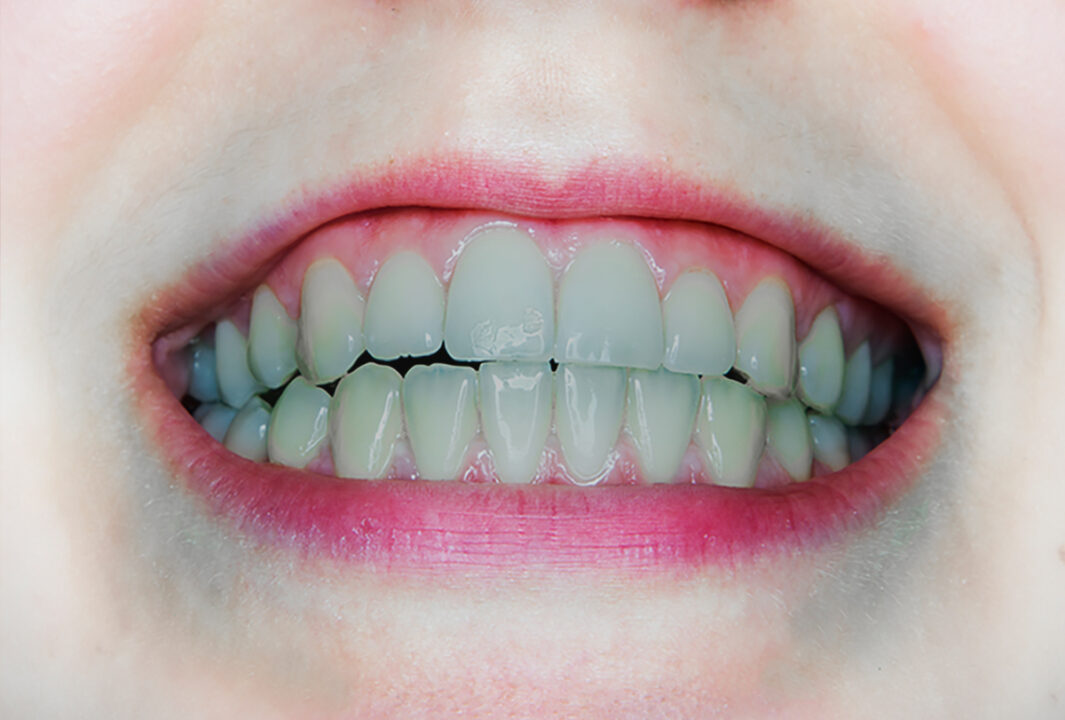Having a grey tooth is not just a matter of aesthetics; it could be a sign of an underlying dental issue that requires attention. If you or someone you know is experiencing this concern, read on to discover why do my teeth look grey and the potential implications for your oral health.
Why do my Teeth Look Grey?
Why do my teeth look grey? Tooth color changes are relatively common and may not always cause alarm. It’s important to differentiate between a widespread color change affecting all teeth and a noticeable color change in a single tooth.
1. Widespread Color Change in All Teeth
If all your teeth appear grey, each tooth’s problem may not be the same. Several factors could lead to this issue:
- Internal or External Staining: Stains from food, drinks, or tobacco can discolor the teeth externally, while internal staining may result from certain medications or excessive fluoride exposure.
- Tooth Development Problems: Issues during tooth development in childhood or before the teeth erupt can lead to intrinsic discoloration.
- Aging: As we age, the enamel on our teeth can wear down, revealing the yellowish dentin underneath, which may give the teeth a greyish appearance.
2. Noteworthy Color Change in a Single Tooth
When a single tooth stands out by becoming noticeably darker or grey compared to its neighboring teeth, it could indicate an underlying problem. This is particularly concerning if the color change happens relatively quickly. To monitor the progression, check old photos to identify when the change began.
A singular tooth turning grey is commonly linked to two main causes:
- Deterioration of Tissue Inside the Tooth (Trauma): Damage to the tooth can occur from an injury, which may lead to discoloration due to the harm caused to the internal tissue. This could happen due to accidents, falls, or any impact on the tooth.
- Necrotic Pulp: The pulp refers to a bundle of nerves and blood vessels residing inside the hollow chamber of each tooth. If this pulp tissue “dies,” it can often result in noticeable color changes in the tooth.
Potential Complications And Solutions
A grey tooth could indicate a necrotic pulp, which requires prompt attention. Leaving it untreated could lead to further complications, including:
- Infection: When the pulp inside the tooth is damaged or dead, bacteria can multiply, leading to infection and the formation of abscesses
- Pain and Discomfort: Infected teeth can cause significant pain and discomfort, affecting your daily life
- Spread of Infection: If left untreated, the infection can spread to neighboring teeth, causing more dental problems
- Tooth Loss: In severe cases, untreated issues with the pulp can lead to tooth loss, necessitating costly replacements like dental implants
If you notice a grey tooth and suspect it might be due to a necrotic pulp or trauma, it’s crucial to seek dental care promptly. Your dentist can do a thorough examination and determine the underlying cause. Common treatment options include:
- Root Canal Therapy: For teeth with necrotic pulp, a root canal procedure can often save the tooth
- Dental Restoration: In some cases, if the tooth is severely damaged and a root canal is not viable, your dentist may recommend dental crowns, veneers, or bonding to restore its appearance and function
Prevention Tips:
To maintain healthy, vibrant teeth and prevent discoloration, consider the following tips:
- Limit Stain-Causing Foods and Drinks: Reduce consumption of coffee, tea, red wine, and colored foods that can stain the teeth
- Quit Smoking: Tobacco use can cause severe tooth discoloration, among other health issues
- Regular Dental Check-ups: Visit your doctor for regular check-ups and cleanings to catch and address any potential issues early on
Final Words: Why do my Teeth Look, Grey
In conclusion, a grey tooth is a sign that warrants attention. While widespread color changes may have various causes, a noticeable change in a single tooth could indicate an underlying dental problem. Seeking timely dental care and adopting preventive measures can help ensure your teeth remain healthy, white, and bright for a confident smile. Remember, oral health plays a significant role in your overall well-being, so prioritize it!



